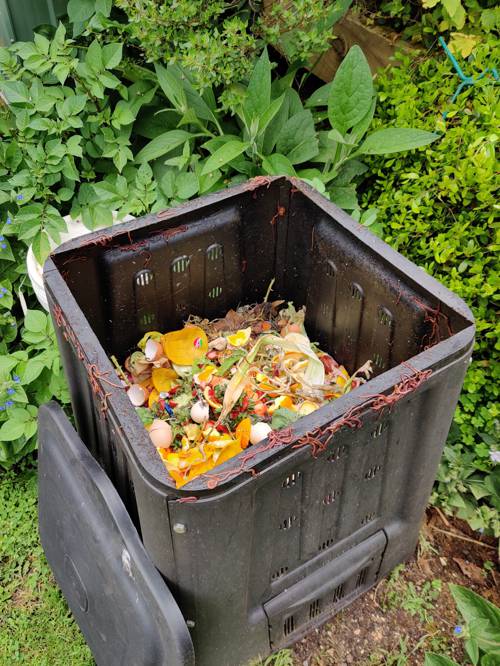
FAQ About Indoor Plant Composting Challenges

What are the benefits of composting for indoor plants?
Composting for indoor plants offers numerous benefits, including the recycling of organic waste into nutrient-rich soil amendments that enhance plant growth. It reduces the environmental impact by minimizing the volume of waste sent to landfills. Compost can improve soil structure, water retention, and provide essential nutrients without the need for chemical fertilizers, promoting healthier plant growth and better indoor air quality.

How can I manage humidity levels in an indoor compost bin?
Managing humidity in an indoor compost bin is crucial to prevent mold growth and unpleasant odors. Ensure proper aeration by turning the compost regularly and using a bin with adequate ventilation. If the compost is too wet, add dry materials like shredded paper or brown leaves. Conversely, if it's too dry, occasionally spray it with water to maintain the right balance.

What materials can I safely compost indoors?
Not all organic materials are suitable for indoor composting. Safe materials include fruit and vegetable scraps, coffee grounds, tea bags (without plastic), small amounts of shredded paper, and plant clippings. Avoid composting meat, dairy, cooked foods, or any oily substances, as these can attract pests and cause unpleasant smells.

How can I prevent pests in my indoor composting setup?
To prevent pests such as flies and mites, ensure your composting bin is tightly sealed and has a proper lid. Regularly stir the contents to speed up the decomposition process, which reduces the risk of pest infestation. Avoid composting dairy and meat products as they attract pests. Additionally, placing a dry layer of shredded paper on top can help deter flies.

How do I know if my indoor compost is balanced correctly?
A balanced compost should have a good ratio of green (nitrogen-rich) and brown (carbon-rich) materials. The compost should be moist, similar to a wrung-out sponge, and have a pleasant earthy smell. If it smells unpleasant or is overly wet, it may indicate an imbalance, suggesting the need for more carbon-rich materials or additional aeration.

What is the ideal size for an indoor compost bin?
The ideal size for an indoor compost bin depends on the available space and the volume of food scraps you generate. A bin of 1 to 2 cubic feet is usually sufficient for an apartment or small household. Ensure the bin is compact enough to fit in your designated space while allowing for adequate airflow and ease of turning the compost.

Can composting indoors cause bad odors?
If managed properly, indoor compost should not produce bad odors. A bad smell is usually an indication of improper balance, insufficient aeration, or the inclusion of inappropriate materials like meat or dairy. Maintaining a balance of green and brown materials and regularly turning the compost will help minimize odors.

Do indoor compost bins attract fruit flies?
Indoor compost bins can attract fruit flies, especially if fruit and vegetable scraps are left exposed. To minimize this, cover new additions with a layer of brown material and regularly turn the compost. Ensure the compost bin is sealed properly and consider using a fly trap nearby if fruit flies become problematic.

How long does it take for compost to be ready for indoor plants?
The composting process can take anywhere from a few weeks to several months, depending on factors like the bin's environment, materials used, and how often the compost is turned. To speed up the process, chop materials into smaller pieces and maintain a balance of moisture and aeration. Finished compost will be dark, crumbly, and have an earthy smell.

What is vermicomposting and can it be done indoors?
Vermicomposting is the process of using worms, typically red wigglers, to decompose organic waste more quickly. It can be an excellent choice for indoor composting as it requires less space and can be done in small bins. Vermicomposting produces nutrient-rich worm castings that are highly beneficial for indoor plants.

Are there any health risks associated with indoor composting?
When done properly, indoor composting poses minimal health risks. It's essential to manage the compost to avoid mold growth, pest infestation, and unpleasant odors, which can affect indoor air quality. Always wash your hands after handling compost materials, and avoid adding hazardous materials like pet waste or chemically treated paper.

What are some signs that my indoor compost is not decomposing properly?
Signs that compost is not decomposing properly include foul odors, visible mold growth, pest infestation, and a mass of soggy, clumped materials. These issues often arise from an imbalance of green and brown materials, insufficient aeration, or too much moisture. Adjusting these factors can help get the composting process back on track.

How can I speed up the composting process indoors?
To accelerate the composting process indoors, chop compost materials into smaller pieces to increase their surface area and promote faster decomposition. Maintain a good balance between green and brown materials, and regularly turn the compost to improve aeration. Keeping the compost warm can also enhance microbial activity and speed up decomposition.

Can I use an electric composter for indoor plants?
Electric composters are a convenient option for indoor composting as they provide a clean, efficient way to compost without pests or odors. These devices typically heat and aerate the compost, breaking it down quickly within days. The resulting product can be rich in nutrients and used directly in indoor plant setups.

What should I do if my indoor compost is too wet?
If your indoor compost is too wet, it can lead to a smelly, anaerobic environment that slows down decomposition. To fix this, add more brown materials like shredded newspaper or dry leaves to absorb excess moisture. Ensure the compost bin has adequate ventilation and consider stirring it more frequently to improve aeration.

Can I compost coffee grounds and tea bags indoors?
Yes, coffee grounds can be composted indoors and are a great source of nitrogen for your compost. Used tea bags can also be composted, provided they're made of biodegradable materials like paper or muslin. Some tea bags contain synthetic fibers that do not break down, so check the brand to ensure compostability.

What are some common composting mistakes to avoid indoors?
Common indoor composting mistakes include adding meats and dairy, which attract pests, failing to maintain the right balance of green and brown materials, leading to odor and decomposition problems, and not providing enough aeration, causing the compost to become anaerobic. Regularly monitor and adjust these aspects to ensure a successful composting experience.

Why is my indoor compost moldy, and how can I fix it?
Mold in indoor compost is usually a result of excessive moisture or inadequate aeration. To fix this, adjust the moisture level by adding more brown materials such as shredded paper and ensuring the compost is turned regularly for proper aeration. Also, ensure the bin has sufficient ventilation to allow moisture to escape.

How important is the carbon to nitrogen ratio in indoor composting?
The carbon to nitrogen (C:N) ratio is crucial for effective composting. An ideal C:N ratio is about 30:1, which balances the decomposition process. Green materials like vegetable scraps provide nitrogen, while brown materials like dead leaves supply carbon. Maintaining this ratio helps microbial activity and reduces the risk of odors and pests.

What types of indoor compost bins are there?
Indoor compost bins vary in design to suit different needs and spaces. Options include traditional bins with ventilation, stackable bins for efficient use of space, Bokashi bins that ferment waste with minimal odor, and vermicomposting bins using worms. Electric composters are also available for automated, quick composting without mess or pests.
